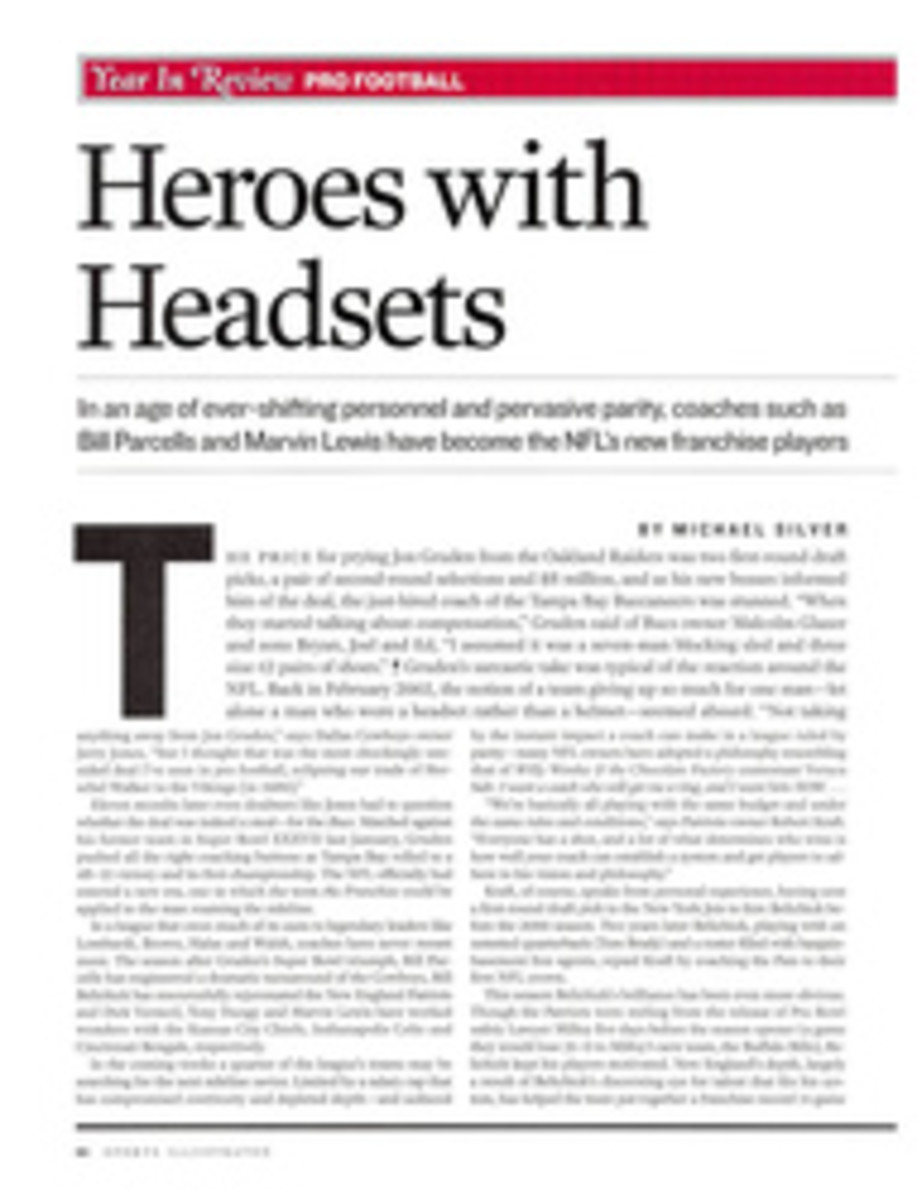
Feeding the Monster The former Sooners coach on his life with the OU football juggernaut
We were cruising through the clouds in a DC-3 on a November
afternoon in 1957, and I can remember the pilot's announcement
clear as day. ¶ I was a 20-year-old sophomore center and
linebacker on the Arkansas football team, and we had just lost to
Don Meredith and SMU in Dallas and were flying back to
Fayetteville. I picked up a SPORTS ILLUSTRATED that had the
Oklahoma football team on the cover, with the headline Why
Oklahoma Is Unbeatable. I was midway through the article when the
pilot said, "I just wanted to give y'all this final score: Notre
Dame 7, Oklahoma 0." ¶ There was a bunch of noise for a few
seconds, and then the plane was dead quiet. I mean, we were
just stunned. The Sooners had won 47 games in a row, and it
didn't seem possible that they would ever lose, let alone to an
18-point underdog.
There was a powerful mystique surrounding Oklahoma football. The
Sooners' success had given the state its identity after the
disastrous Dust Bowl years of the 1930s, which had left America
with the impression--not entirely inaccurate--that Oklahoma had
become a land of nothing but barren ground and poverty.
University of Oklahoma president George Cross decided the best
way to boost the state's self-esteem would be to field a
dominating football team. In 1946 he hired as football coach Jim
Tatum, whose assistant Bud Wilkinson took over the next year. At
the time the college game had an influx of players returning from
World War II, guys who were 24 or 25, and NCAA eligibility
requirements were so loose that they could move from school to
school without any problems. As a result the Sooners were able to
get a lot of great talent, and Bud started winning from the
outset.
By the time I became the coach in 1973, Oklahoma was football. I
tell people, "I didn't create the monster. George Cross and Bud
Wilkinson did." My job was to feed the monster.
One challenge in feeding a monster, of course, is keeping him
satisfied. Sooners fans' expectations are amazingly high. In
1975, after we had a 37-game undefeated streak snapped by Kansas,
I got a letter I'll never forget from a fan in Tulsa. "Coach,
it's time to change the offense," he wrote. "You need to do
something other than the wishbone, because people have caught up
to what you're doing."
I wrote back, "Hey, did you happen to notice what offense the
other team ran that day?" Kansas, with Nolan Cromwell, had beaten
us by running the wishbone! The only difference was that we'd
kept fumbling.
The best way to keep OU fans happy is simple: Beat Texas. Sure,
coaches will always say it's just one game out of many, but
that's a bunch of bull. Ask the Longhorns' Mack Brown if it's
just another game on the schedule, now that he's lost four in a
row.
Even more than the Nebraska rivalry, which has been ruined by the
Big 12's two-division format (the two schools can now go two
seasons without playing each other), the Red River Shootout is
the game. Part of that is the old Okie inferiority complex,
something everyone in this state feels at one time or another;
there's no better cure than kicking Texas's butt. Another factor
is that some of our fans reside in enemy territory. Let me put it
this way: I don't think a Texas grad has ever come north of the
Red River to make a living, but a whole lot of Oklahoma grads
have gone south.
At 66 I still celebrate the Sooners' success and bleed for them
when they lose. My wife, Becky, and I just moved into a house
that's about 500 yards from their practice field. From my porch
Tiger Woods could hit driver and three-wood and be right at the
50-yard line. As Bud Wilkinson did for me, I'm trying to be as
supportive as I can of Bob Stoops, who has made Oklahoma dominant
again. The scary thing about these Sooners is that they're only
going to get better. Great players are coming from all over the
country to be a part of this, and the program is on an incline.
It's Bob Stoops's monster to feed now, and it's a whole lot of
fun to watch.
Barry Switzer, who led Oklahoma to three national titles and a
157-29-4 record from 1973 to '88, is retired and lives in Norman.
COLOR ILLUSTRATION

